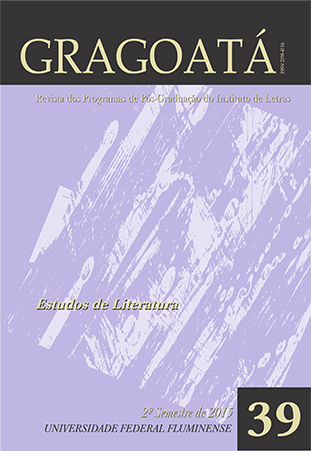WAVES BREAKING ON BERNARD: TOWARDS A NEW READING OF ‘THE WAVES’
DOI:
https://doi.org/10.22409/gragoata.v20i39.33359Keywords:
The Waves, image, memory, time, Virginia WoolfAbstract
By closing The Waves (1931) with Bernard’s extended monologue after presenting a narrative absolutely fragmented by the six voices that pass along with her symbolic day, Virginia Woolf opens us to a new possibility of reading her masterpiece: that of understanding her entire narrative as sustained by its last section and its central character. This essay proposes a backwards reading of Woolf's novel, from the time of the instant (present) to recollected time (past), a reading in accordance with Bernard as the binding thread of her narrative. To do this, we draw a parallel with what Woolf coined as her philosophy in Moments of Being (1941, 1971), her theory about moments of being and of non-being, and the time of the instant, which compresses both past and future into images according to St Augustine in his Confessions. Bernard seems to present us with the waves that come to us from ourselves, our memories and desires, in a movement of inevitable break that begets the human.Downloads
Downloads
Published
How to Cite
Issue
Section
License
Authors who publish in Gragoatá agree to the following terms:
The authors retain the rights and give the journal the right to the first publication, simultaneously subject to a Creative Commons license CC-BY-NC 4.0, which allows sharing by third parties with due mention to the author and the first publication by Gragoatá.
Authors may enter into additional and separate contractual arrangements for the non-exclusive distribution of the published version of the work (for example, posting it in an institutional repository or publishing it in a book), with recognition of its initial publication in Gragoatá.

Gragoatá is licensed under a Creative Commons - Attribution-NonCommercial 4.0 International.











